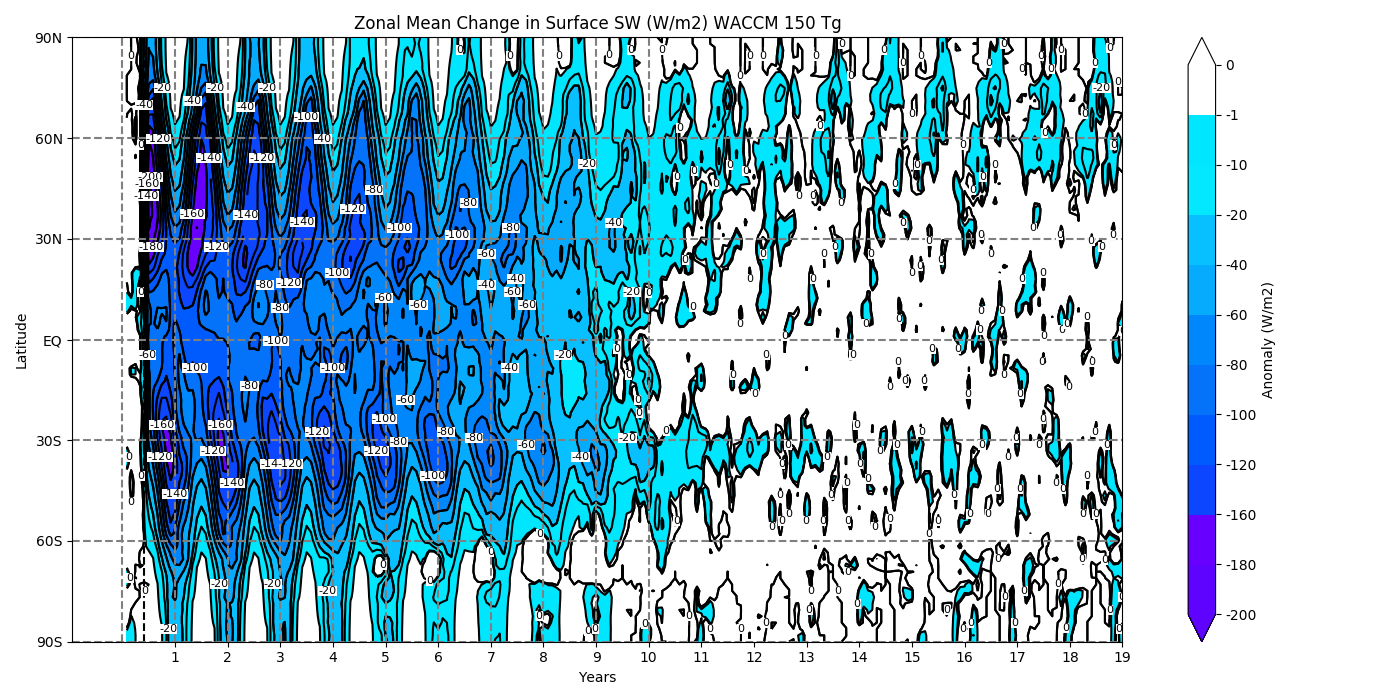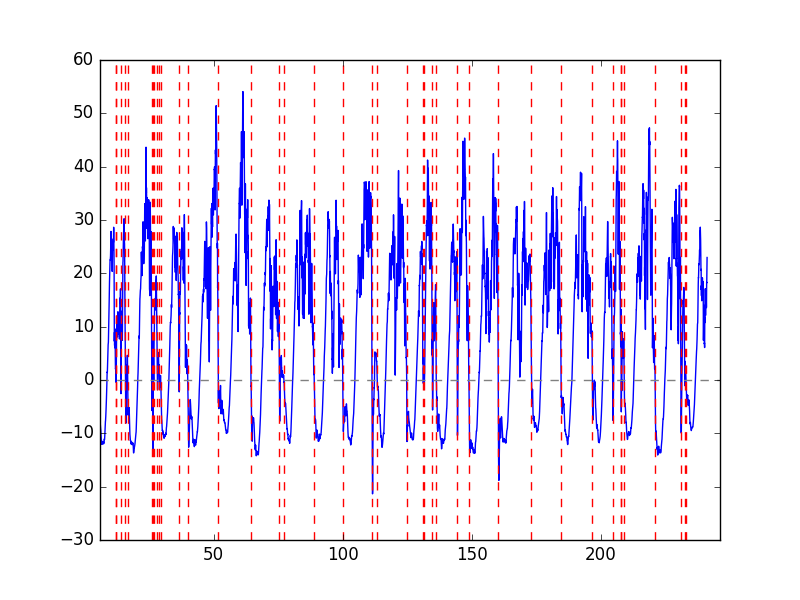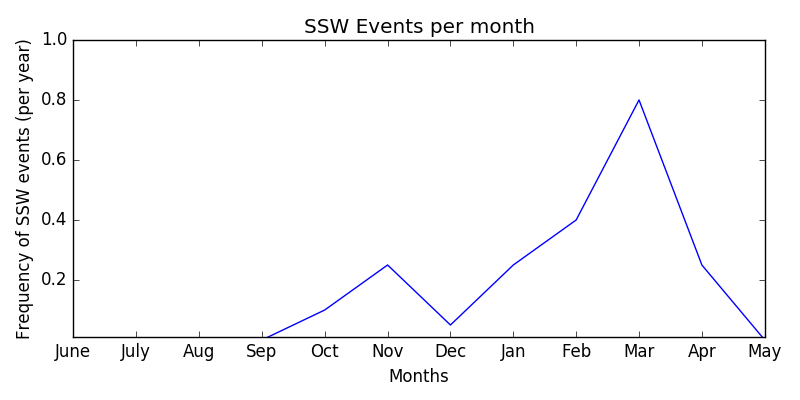

Using nw_cntrl_03:
Although many of the changes to the climate that develop are from negative radiation anomalies, variability in the stratosphere creates notable regional signatures in the aftermath of a soot injection into the lower stratosphere / upper troposphere. Sudden Stratospheric Warmings (SSWs) are one of the major manifestations of natural variability which influences weather from the poles to the mid-latitudes. SSWs are usually defined as zonal-mean zonal wind reversal at 10 hPa and 60N. (Kim et al., 2017) This definition can be influenced by bias, such that models with a weaker climatological polar vortex has more frequent SSWS. A model could simulate a higher frequency of SSWs by having a weaker vortex, because it is easier to decelerate the zonal winds from 10 to <0, compared to 20 to <0.
SSWs are characterized by a reversal of the zonal winds as well as a warming of stratospheric temperatures by tens of degrees within a few days, reversing the climatological temperature gradient. In modeling studies, it has been found that a warmer climate will have more frequent SSWs, as SSWs occur due to the upward flux of wave activity into the stratosphere.
'To ensure a focus
on midwinter SSWs, final warming events are excluded
by adopting the method proposed by Charlton and
Polvani (2007).'
'Polvani and Waugh (2004) showed
that the upward wave activity entering the stratosphere,
integrated over 20 days or longer, leads to a
marked weakening of the polar vortex'
Analysis of reanalysis finds that there are an average of 0.46 events per year in the northern hemisphere.
'de la Torre etal. [2012] found that the frequency of major SSW events in WACCM is very similar to that found in reanalysis data,although the major SSW events are generally prolonged in WACCM and occur disproportionately often in December.'
(Holt et al., 2013)
Advanced literature review
The following definitions are used below, with the temperature condition turned on/off for sensitivity tests.
#MAJOR SSW: westerly winds at 60N, 10 hPa reverse (become easterly (positive to negative))
# *zonal mean temperature increases poleward from 60 degrees latitude
#MINOR SSW: westerly winds are slowed but do not reverse
# *significant temperature increase (25 degrees in a period of a week or less)
#FINAL SSW: becomes easterly for the summer
#
# https://journals.ametsoc.org/doi/abs/10.1175/JCLI-D-16-0465.1
KPG Control Run (42 years)
First, the CESM-WACCM4 control run for the KPG asteroid case is assessed for SSW frequency. Zonally averaged winds at 10 hPa and 60N are in blue, while zonal wind reversals (SSW EVENTS) are marked by red dashed line. The top graphs do not use the temperature gradient reversal as a requirement, while the bottom graphs do. As such, the frequency of SSWs decreases when you add an additional requirement.


Based on reanalysis, an average of 0.46 SSW events occur during DJF when averaged over 50 years. During this 20 year analysis, we found an average of 0.50 SSW events during DJF.